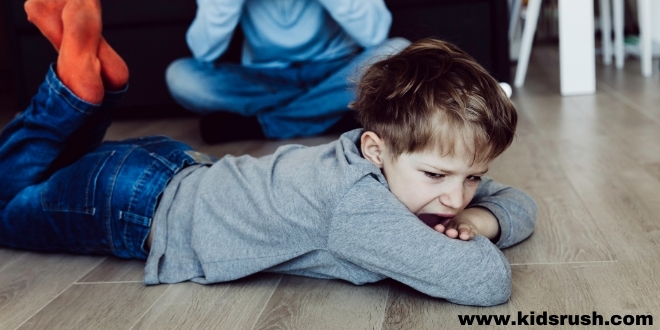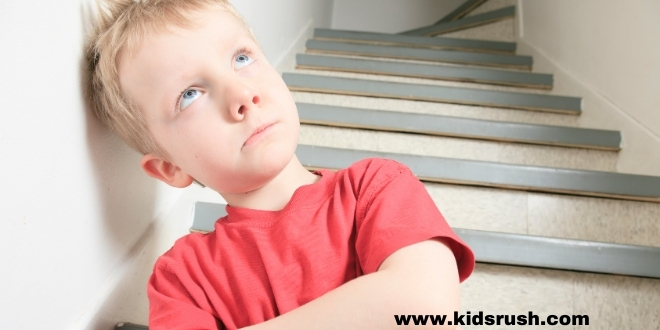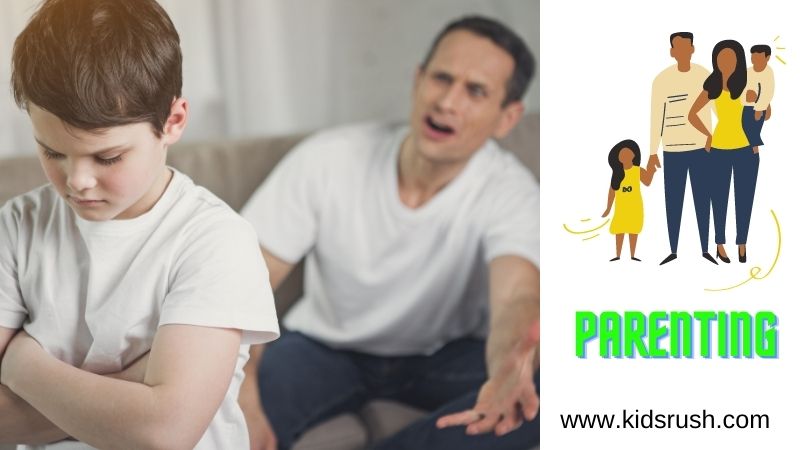Introduction to behavior problems in children:
Children acquire a large number of skills as they grow. Some of these skills, such as controlling urine and bowel movements, depend mainly on the maturity level of the child’s nerves and brain. Others, such as behaving appropriately at home and school, are the result of a very complex interaction between the child’s physical and intellectual (cognitive) development, health, character, and relationship with parents, teachers, and the people who support him. care (see also Child Development ). Other behaviors, like thumb sucking, appear when children look for ways to help themselves cope with stress. And still, other behaviors appear in response to parenting style.
Behavioral problems can become so worrisome that they threaten normal relationships between the child and those around him or interfere with his emotional, social, and intellectual development. Some of the behavior problems include:
- Spasms of crying or sobbing
- Nutrition problems
- Refusal to go to school
- Sleep disorders
- Tantrums
- Violence
Many of these problems arise from normal developmental habits that children learn easily.
Some behavioral problems, such as nighttime incontinence (see Urinary Incontinence in Children ), can be mild and resolve quickly and spontaneously as part of normal development. Other behavioral problems, such as those found in children with attention-deficit / hyperactivity disorder (ADHD), require long-term treatment.
Behavior problems in children
Stress-related behaviors in children

Every child handles stress differently. Children’s behaviors for managing stress include thumb-sucking, nail-biting, and sometimes headbanging.
Thumb sucking
Thumb sucking (or pacifier use) is normal in early childhood, and most children stop when they are 1 to 2 years old, although some continue to do so at school age. This is normal in times of stress, but after 5 years it can alter the shape of the palate, cause dental misalignment, and make the child the object of teasing from other children. Sometimes persistent thumb sucking is the indication of an underlying emotional disturbance and behavior problems.

Over time, all children stop thumb sucking. Parents should intervene only if the dentist advises them to do so or if they feel that thumb sucking is socially inappropriate and unhygienic. Parents should encourage the child to understand why it is good to stop.
When your child shows a willingness to quit, using little reminders is good initial encouragement. This is followed by symbolic awards that are placed directly on the finger, such as a colored bandage, nail polish, or drawing a colored star with a non-toxic marker. Additional measures may be used such as wrapping the finger in plastic, immobilizing the elbow at night to prevent the child from bending it, or applying a bitter substance to the nail. However, none of these measures should be used against the wishes of the child.
Nail-biting (onychophagia)
Nail-biting is a general dilemma with young children. The habit usually disappears as the child grows older, but it is usually related to stress and anxiety. Children motivated to quit can be taught to substitute other habits (for example, turning a pencil). A reward system, in which the child keeps more rewards for not performing a certain behavior, could reinforce the desired behavior. For example, the child is given 10 coins in the morning, and in the evening he must return one coin for each time he has bitten his nails during the day.
Head bangs and rhythmic rocking
In older infants (1 to 2 years of age) headbanging and rhythmic rocking are common. Although these alarms parents, children do not seem to be bothered and, in fact, these behaviors seem to satisfy them.
Children usually outgrow rocking and head bumps between 18 months and 2 years of age, but repetitive actions sometimes occur even in older children and adolescents.
Children with autism and other developmental problems may also bump their heads or perform other repetitive movements. However, they present other additional symptoms that facilitate their diagnosis.
Although children rarely injure themselves with this behavior, the possibility of injuring themselves (and the noise they make) is reduced by placing the crib away from the wall, removing the wheels, or placing felt pads under the wheels and padding the inside. of the crib.
Behavioral Issues and Parenting Styles
Many relatively minor behavioral problems can be traced to parenting styles.
The problems of interaction between parents and children are difficulties in the relationship between children and their parents who may begin during the first months of life. The relationship can be strained because of
- A difficult pregnancy or delivery
- Puerperal depression affecting the mother
- Lack of support for the mother from the father, partner, relatives, or friends
- Disinterested parents
A Baby’s unpredictable feeding and sleeping schedules can make bonding even more stressful. Most babies don’t sleep through the night until 3 to 4 months of age. Poor relationships between a child and his parents can slow down the development of mental and social skills and cause stunting.
A doctor or a member of the nursing staff can analyze the temperament of a particular baby and offer parents information about the development of the babies and useful tips to cope with the situation. Parents can then develop more realistic expectations, accept their feelings of guilt and conflict as normal, and try to rebuild a healthy relationship. If the relationship does not improve, the child may continue to have problems later.
The little realistic expectations contribute to the perception of behavioral problems. For example, parents who wait for a 2-year-old to pick up toys without help may mistakenly believe that there is a behavior problem. Parents may misinterpret other normal behaviors associated with a 2-year-old, such as refusing to obey an adult’s request or rules.
A self-perpetuating cycle is a cycle in which negative (inappropriate) behavior on the part of the child causes a negative (angry) response from the parent or caregiver, followed again by negative behavior on the part of the child, leading to turn to an even more negative response from parents.
Self-perpetuating cycles generally begin when a child is aggressive and resistant. Parents or caregivers respond with scolding, yelling, and spanking on the buttocks. Self-perpetuating cycles can also be the consequence of an overprotective and overly permissive parental reaction to a fearful, overly dependent, or manipulative child.

The self-perpetuating cycle can be broken if parents learn to ignore inappropriate behavior that does not negatively affect others, such as tantrums or refusal to eat. Redirecting the child’s attention to interesting activities allows the reward of good behavior, which makes the child and parents feel that it has been worth it. For conduct that cannot be overlooked, abstraction or a time-out technique can be tried.
Discipline problems are inappropriate behaviors that develop when the structure is not effective. Discipline is more than punishment. It’s about providing children with clear, structured, and age-appropriate expectations that let them know what is expected of them. It is much easier and more satisfying for both parents and children to reward desirable behavior than to punish inappropriate behavior.
In older children and adolescents, behavior problems can arise when children seek to break free from parental rules and supervision (see Behavior Problems in Adolescents ). Parents must learn to distinguish between such problems and occasional errors in judgment.
Treatment for behavior problems in children
- Early intervention
- Behavior Modification Strategies for Parents
The goal of the treatment of behavior problems is to change unwanted habits by getting the child to correct his behavior. This goal often involves persistent changes in parental attitudes, which in turn results in an improvement in the child’s behavior.
Behavior problems need to be addressed early because behaviors are more difficult to change when they are already in place. Sometimes parents just need to be sure that the particular behavior is normal or listen to a few simple suggestions. A simple suggestion is that parents spend at least 15-20 minutes a day engaging in an enjoyable activity with the child or paying attention to desirable behaviors (“to catch the child being good”). Parents are also encouraged to spend time away from the child regularly.

Some additional strategies for behavior modification include the following:
- Identify triggers for the child’s behavior and factors (such as extra attention) that may unintentionally reinforce it
- Clearly define for the child what behaviors are desirable and which are undesirable
- Establish consistent rules and limits
- Track how well they are following the rules and limits
- Implement proper rewards for achievement and consequences for improper behavior
- Minimize anger when rules are applied and increase positive interactions with the child
Efforts to control a child’s behavior through scolding or physical punishment, such as spanking the buttocks, can work for a short time if used in moderation. However, these approaches generally do not sufficiently modify inappropriate behavior and may instead reduce a child’s sense of security and self-esteem.
On the other hand, spanking the buttocks can go hand in hand when the parent is angry and can send the message to the child that physical aggression is an acceptable way to deal with unwanted situations. It may be helpful to apply a time-out technique by separation. However, punishments become ineffective when abused or used inconsistently. Furthermore, threats that children receive from their parents can be psychologically damaging.
If a behavior dilemma does not change in 3 to 4 months, doctors may prescribe a mental health evaluation.
Time-out technique for departing
This disciplinary technique is most effective in behavior problems when children are aware that their actions are wrong or unacceptable and when they see the lack of attention as punishment. Generally, until the age of 2, children do not understand that failure to pay attention to them is a punishment that is linked to undesirable behavior. When using this technique within a group, such as in daycare, one must take care as it can cause humiliation and harm.
Apply this technique when a child misbehaves in a way that is to result in a departure from the group. Normally, give verbal cues and reminders to the child before using the time-out technique.
- Explain to the child what the inappropriate behavior has been, send him to the “thinking chair” or bring him to it if necessary.
- The child should sit in the chair for one minute for each year of age (a maximum of 5 minutes). Avoid application of physical restrictions.
- A child who rises from the chair before the set time must sit down again and the time-out is restarted. Avoid onversation and eye contact.
- When the time comes for the child to get up, the caregiver asks the reason for the time-out without anger or criticism. If the child does not remember the exact reason, then remind him briefly. The child need not express remorse for inappropriate behavior as long as it is clear that he understands the reason for the time-out.
As soon as possible after the withdrawal period, the caregiver should make an effort to identify good behavior and praise him for it. Good behavior may be easier to achieve if you redirect the child to a new activity away from the scene of the inappropriate behavior.
Sometimes a child’s inappropriate behavior increases when the child is in a time of withdrawal. In such cases, the caregiver may redirect the child to another activity before the withdrawal time has expired. These redirects should only be done when the child understands why they have been given a time out.

